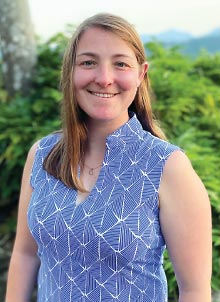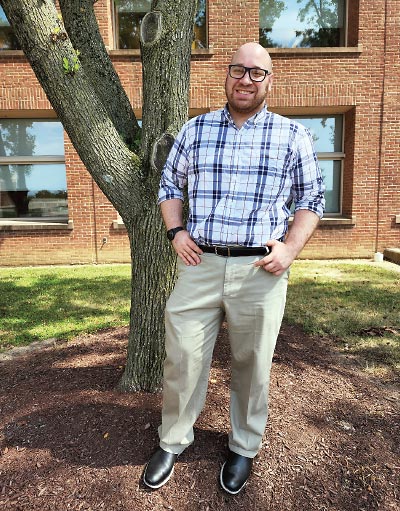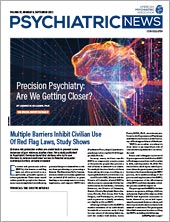Access to medications for opioid use disorder (MOUD) is slowly but surely increasing in New Jersey. An April 2020 report by the Urban Institute found that 56% of substance use treatment facilities offered any form of MOUD (buprenorphine, methadone, or naltrexone), up from 49% in 2018. The catch is that if people do not know what MOUD is, they cannot request it—a challenge that the students of the Rutgers Interdisciplinary Opioid Trainers (RIOT) program seek to address. The students are volunteers from seven schools of health care and health sciences at Rutgers University who provide free one-hour presentations about MOUD to their communities in settings ranging from schools to VA health centers.
“My generation of health professionals needs to be educated about opioid use disorder and spread proper education about it. Along with COVID, it’s the public health crisis of my generation, like the AIDS epidemic was for previous generations,” Chloe Cavanaugh, an M.D./Ph.D. student in the program, told Psychiatric News. “As a medical student, I have a desire to educate the community in a way that’s packageable for a public audience, which is what this program seeks to do.”
Begun in 2019 and sponsored by a grant from the Division of Mental Health & Addiction Services of the New Jersey Department of Human Services, the RIOT program offers students an 18-hour didactic curriculum that includes intensive training on substance use and MOUD, practice in giving community presentations on MOUD, and ongoing mentoring and support for as long as the students are enrolled in school. The program is overseen by Jill Williams, M.D., a member of APA’s Council on Addiction Psychiatry and a professor of psychiatry and director of the Division of Addiction Psychiatry at the Rutgers-Robert Wood Johnson Medical School.
“Some might say that students and faculty could never devote that much time to the training, but my sense is that the students need this much time to be comfortable with the material and be able to speak to the community with expertise,” Williams said. “Even if the students couldn’t do community presentations, the time is worthwhile because they are going into their professions with a good understanding of substance use disorders that they wouldn’t have had otherwise.”
The program has been well received and shown to improve knowledge about MOUD among community members who attend the educational presentations. In a paper in the American Journal on Addictions, Williams and colleagues reported on the results of pre- and post-presentation surveys taken by 315 attendees. In one survey, the percentage of attendees who correctly understood that naloxone can provoke withdrawal symptoms increased from 62.4% to 80.3%. In another survey, 36.5% of respondents said they felt “slightly more” positive about MOUD after listening to the student presentation, and 44.1% said they felt “much more” positive about MOUD. Furthermore, 20% of respondents had a family member with OUD.
“By allowing students to present their newly attained knowledge to the community and gain the experience of interacting with people who themselves may be suffering from OUD or personally know someone who is, they are able to go beyond the theoretical aspects of OUD and learn in real-time how the opioid crisis impacts all of us,” Williams and colleagues wrote.
At the time the study was published, 120 students had participated in the program and delivered 59 presentations to more than 1,065 people in their communities.
Learning Goes Both Ways
The program has not been without its challenges. For one, the COVID-19 pandemic hit just as the first students were getting used to driving around New Jersey to give the presentations, and the students had to switch from in-person talks to a virtual format. However, the presentations are still conducted in real time so that students may answer questions from viewers.
“People are very inquisitive and welcoming, and they ask questions about practical things I haven’t considered before,” said Charles C.J. Levin, a medical student in RIOT. For example, one health professional asked him about Vivitrol (extended-release injection naltrexone) and what to tell patients who may not want to take it because they fear not being able to receive pain medications if they are injured in an accident. Levin said that the presentations enable the students to discuss such practical considerations in a way that is helpful to both the audience and the students.
“Opioid use disorder is pervasive in every area of medicine,” Levin said. “When you go out into the community and see what education people [may or may not] already have and what opinions and fears people have, you realize how important interacting with the community is.”
Another challenge is that graduate students are often pulled in many directions, and those who are not going into specialties directly related to treating substance use may not feel inclined to get involved.
“It can be difficult to ask medical students to know about one more thing if they don’t see it as part of their future practice,” Cavanaugh said. “But considering how far into society and people’s lives [the opioid crisis] reaches, we can’t have our heads in the sand. There is so much stigma and misinformation about this that it is our duty as health professionals to know about it.” ■



